Charleston, SC, 16th May, 2019 – For over 200 million years, throughout the world’s coastal regions, sea turtles have helped our ecosystem thrive. But, artificial lights have interfered with their instinct to move towards the sea via moonlight. Building and street lights disorient the turtles, leading them away from the safety of the water where they succumb to dehydration, predators and being run over by cars. The result: only 1 in 1000 hatchlings survive to maturity. Without sea turtles, sea grass beds will decline and the beach/dune system will deteriorate, creating a trickle down effect to other marine species and yep, you guessed it, humans.
So what do we do? While normal lighting attracts turtles, they are not affected by longwavelength light (580 nanometers or longer) which produces a yellow, red or amber color. If you live in a coastal area where sea turtles nest, replacing your outdoor lighting with these “turtlefriendly” lights will keep everyone safe and sound. If protecting turtles isn’t enough incentive, many counties have also implemented strict laws around non-compliant lighting in nesting areas. These can include large fines (sometimes even per bulb per violation day) and jail time.
“Whether it’s a new ocean-front home or just a smaller retrofit project, inspectors are going to come at some point during the process to ensure compliance,” says Dawn Howard, Southeast Florida’s Area Lighting Manager for Ferguson. “With EA’s lights, I know I’ll have the most comprehensive range of base types and the highest quality to be as proactive as possible for my customers.”
Lighting pollution affects more than just turtles. According to the Florida Fish and Wildlife Conservation Commission (FWC), artificial lights cause disruption of behavior, injury and death to thousands of migrating birds, reptiles, amphibians, mammals and invertebrates each year. So, keeping lights LOW, SHIELDED and LONG (amber color) are key to minimizing impact.
“We didn’t set out to make turtle-friendly lamps initially,” says Tom Garber, EmeryAllen’s President. “As is the case with the majority of our products, the need for these lamps was brought to us by our customers. Living and working in a coastal community where sea turtles nest brought it that much closer to home. We knew we wanted to do something to help.”
EmeryAllen’s turtle-friendly bulb line-up (designated by “AMB”) consists of thirteen patent-pending, amber bulbs offered in 2 voltages (12v and 120v), 5 wattages (1.0W, 2.0W, 3.0W, 4.0W, and 6.0W), and 12 base configurations. They can be used in a variety of outdoor fixtures, including landscape lighting, outdoor sconces and more. And they are all FWC certified through the Wildlife Lighting Certification Process. Customers can visit EmeryAllen’s website to see technical specifications of the bulbs and where to buy them.
About EmeryAllen
Founded in 2015, EmeryAllen is the leader in the design, development and distribution of high performance, miniature LED replacement lamps. Their patented electronic technology goes into an impressive lineup of bulbs, which take the place of miniature halogen and incandescent light bulbs in residential, commercial and hospitality applications. Designed specifically for North American lighting applications, EmeryAllen’s products have the best lumen efficacy on the market (over 100lm/W). And, they meet or exceed the safety and energy requirements of UL, the National Electric Code of the State of California and the US Department of Energy.
About FWC
The Florida Fish and Wildlife Conservation Commission (FWC) enacts rules and regulations regarding the state’s fish and wildlife resources. To do this, the seven Commissioners meet five times each year across the state to hear staff reports, consider rule proposals, and conduct other Commission business. The Wildlife Lighting Certification Program is a cooperative effort between the Florida Fish and Wildlife Conservation Commission and the U.S. Fish and Wildlife Service designed to educate the members of the public, the building industry, and government officials how to minimize adverse impacts to wildlife by using proper lighting methods

